![]()
Introduction: English
Types of bread in the Netherlands have historically been divided east-west and north-south, determined by the cereal that was grown. In the south-west wheat was grown on the clay soil and brown bread was baked from this. In the south and east rye bread was eaten because of rye and oat harvests. White bread used to indicate status. For centuries Dutch bakers produced white bread for the rich and dark bread for ordinary folk. After the Second World War, our understanding of health and consumer choice were redrawn. Now the dark, coarse loaves are considered healthier and more upmarket.
Image: keepps under Creative Commons license
Introduction: Dutch
Historisch gezien is er een scheiding in soorten brood, oost-west en ook noord-zuid. Dat heeft te maken met wat er verbouwd werd. In het zuidwesten werd tarwe verbouwd op kleigrond, en daar at men bruinbrood. In het zuiden en oosten werd met name roggebrood gegeten omdat daar rogge en haver werden verbouwd. Wit brood gaf status. Eeuwenlang bakten bakkers voor de notabelen het wittebrood en gewoon brood voor het gewone volk. Echter, na WO2 ontstond er een herdefiniëring van wat gezond en luxe is en nu worden de roggebrood en ander grof tarwemeel brood gezien als luxe, en gezonder.
Dutch
Onze ouders waren niet arm, maar wij hadden het niet breed. Via, via mochten wij, drie oudsten, mee op kamp: ‘De Grote Beer’ op Terschelling. Wij waren gelovig en moesten van onze ouders iedere zondag naar de kerk. Dus vroeg in de ochtend, met maar een of twee andere kinderen, en begeleiding. Als wij weggingen, waren ze net bezig het ontbijt voor iedereen klaar te maken en omdat het zondag was, kregen we suikerbrood. Dat hadden wij nog nooit gegeten, puur luxe en verwennerij. Dik besmeerd met roomboter. Wij kregen altijd twee of drie stukken mee en zaten onderweg en waarschijnlijk ook nog in de kerk te smikkelen. Nooit heeft brood zo lekker gesmaakt als toen!
English
Our family was not poor but there was no cash around for luxury. Through connections we three eldest children, were allowed to join a summer camp ‘the Big Bear’ on Terschelling. We were religious and our parents insisted we attend mass each Sunday. Very early in the morning off we went, a few children with guardians. As we set off, breakfast was being prepared for everybody. Because it was Sunday, we were given suikerbrood. We had never tasted this before in our lives, such luxury, covered in thick butter. We were given an extra couple of pieces and were nibbling those along the way, and probably also in the back of the church. Bread never tasted this good!
Image: © Dave J. van der Waa
De ontbijtkoek
Ontbijtkoek translates literally as a breakfast cake. This popular Dutch cake is spiced with nutmeg, cloves and cinnamon. It’s often served with coffee in the morning and at children’s parties.
Image: © iStockphoto
Het krentenbrood
Krentenbrood is raisin bread. In olden times this bread, in lengths of 50 cm, was given to women just after giving birth as they were deemed too weak and with this they did not need to do any baking for a couple of days.
Image: © Dave J. van der Waa
De stroopwafel
Dutch stroopwafel are delicious with a cup of coffee. They’re made with two layers of very thin waffle, with syrup in between.
Image: © iStockphoto
De moorkop
Moorkop is the Dutch version of the French éclair.
It’s a round, large, chocolate covered, cream filled choux pastry topped with a large extra portion of cream.
Image: © iStockphoto
De tompoes
Tompoes is made from two layers of rectangular puff pastry with thick custard in between and a bright pink glaze on top.
This Dutch sweet dessert really brightens up the day!
Image: © iStockphoto
Het kadetje
Kadetje is a small bun traditionally decorated with a diagonal indent along the top.
Image: © Dave J. van der Waa
Het suikerbrood
Suikerbrood is a sweet, eggy loaf with lumps of sugar baked inside.
It’s served thickly buttered and makes a wonderful treat on Sundays.
Image: © Dave J. van der Waa
Het roggebrood
Dutch roggebrood is black, dark and baked in a square tin.
Baked from rye water and salt, it’s inextricably linked with raw herring and pea soup.
Image: Erik Tjallinks under Creative Commons license
Het paasbrood
Paasbrood is a special raisin bread filled with almond paste or marzipan and covered with icing sugar.
It is similar to the German stollen baked at Christmas.
Image: Roel under Creative Commons license
Het meergranenbrood
Meergranenbrood is bread made from more than one type of wheat flour.
Image: © Dave J. van der Waa
Het melkbrood
Melkbrood is baked from dough made with milk instead of water.
Image: © Dave J. van der Waa
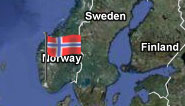
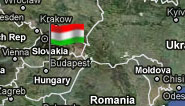
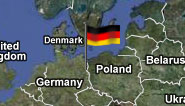
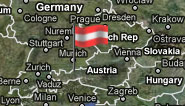
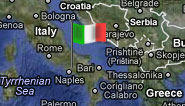
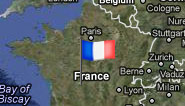
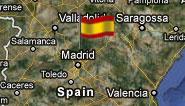

Rate and Review
Rate this activity
Review this activity
Log into OpenLearn to leave reviews and join in the conversation.
Activity reviews